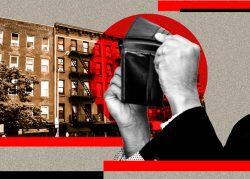Like their counterparts in the housing market, New York City landlords know now is not the time to accept a first offer.
Two weeks after the Rent Guidelines Board’s staff floated rent hikes of up to 4.5 percent on one-year leases for the city’s rent-stabilized apartments, the Rent Stabilization Association, a landlord group, has countered with a proposal to raise rents by up to 6.5 percent.
In its testimony, the group argued that steeper hikes were needed to offset landlords’ rising costs and declining revenue. A report issued by the board last month found that landlords’ net operating income declined nearly 8 percent in 2020, the largest drop in 17 years.
Like in previous years, the group stressed that the board’s figures fail to fully illustrate landlords’ financial woes. Owners have long contested that the board’s annual income and expense survey, which is used to determine the recommended rent increases, is based on two-year-old data that fails to account for mortgage payments and excludes buildings with fewer than 11 units, which landlord groups claim are more likely to be rent-stabilized.
The Community Housing Improvement Program, another landlord group, noted that the board’s data pegged inflation — a harbinger of higher operating costs — at an older rate of 4 percent, while a report by the state comptroller showed that the consumer price index had reached 6.1 percent in the New York metropolitan area in March.
And a white paper released by NYU’s Furman Center this month highlighted that the board’s survey examines buildings with at least one rent-stabilized unit, meaning a number of the properties counted may also contain market-rate apartments or retail space, which could muddle the findings if the data is misinterpreted.
To offer what it contends is a more accurate, up-to-date read on stabilized housing, the Real Estate Board of New York commissioned a survey by HR&A Advisors using member tax forms submitted between 2019 and 2021.
The study considered the state of 273 rent-stabilized buildings, including 14 with fewer than 11 units.
REBNY’s study found that while net operating income fell in line with the board’s findings, owners paid more in taxes and maintenance costs than the rent board had calculated.
The board’s study showed maintenance expenditures fell 9.8 percent from 2019 to 2020. But analyzing those same costs from 2019 to 2021, REBNY found that they actually increased 6 percent after dipping in 2020. The owner group said that those expenses were “erroneously minimized due to the lag in data.”
By REBNY’s calculations, landlords have also spent 25 percent of their income on property taxes, above the board’s findings of 20 percent. REBNY said that discrepancy is a byproduct of the board’s methodology, which includes properties that receive the 421a incentive and do not pay full property taxes. REBNY excluded those buildings from its survey.
“We believe the study clearly shows there’s an undercounting of the tax burden for many owners and this is worth further exploration,” said Basha Gerhards, REBNY’s senior vice president of planning.
Gerhards did caution that because REBNY’s report considers only about 3 percent of the city’s rent-stabilized housing stock it isn’t “statistically significant.” The board’s report, by comparison, represents at least 80 percent of regulated units, according to Rent Guidelines Board Chair David Reiss.
Alex Schwartz, a public member of the board, also noted that the findings are based on tax filings from owners who are appealing their assessments, which could make them unreliable.
Gershards said REBNY’s findings should be viewed as a supplement to the board’s reports.
Tenant advocates used their time to highlight that owners’ declining net operating income is likely a temporary hit. The board found that most income drops were concentrated in the core of Manhattan, where buildings with rent-stabilized units are likely to have a higher percentage of market-rate ones.
Jacob Udell, director of research and data at the affordable housing nonprofit University Neighborhood Housing Program, said that as market-rate rents have soared beyond pre-pandemic levels, those owners have likely recouped their losses.
“Landlords hit hardest by [income] drops will likely have benefited most from market-rent increases,” Udell said.
Other tenant advocates sounded a refrain used throughout the pandemic: Stabilized tenants, many rendered jobless, are struggling to make rent as it is and can’t stomach an increase.
But the RSA pointed to data on emergency rent relief applications that showed rent-regulated tenants may be in better shape than their advocates claim.
Vito Signorile, the RSA’s vice president of communications, said just 5 percent of stabilized renters had been approved for relief funds. There remain about 72,000 rent-regulated tenants with pending applications. Even if all are approved for relief, Signorile said that would only represent 14 percent of the city’s estimated 850,000 stabilized units.
Signorile said that data “may indicate that stabilized tenants have not been as impacted by the pandemic as previously believed.”
Read more


